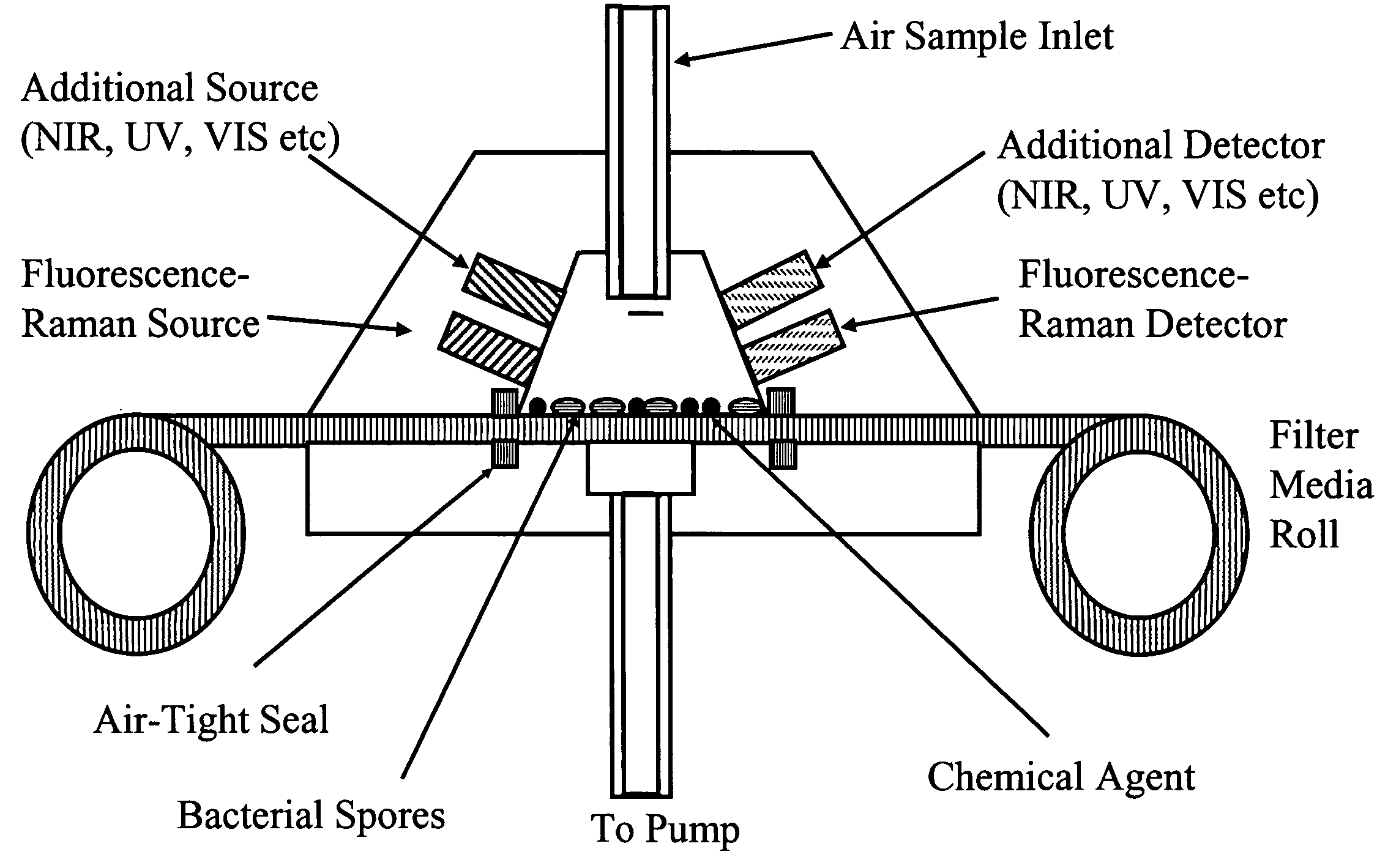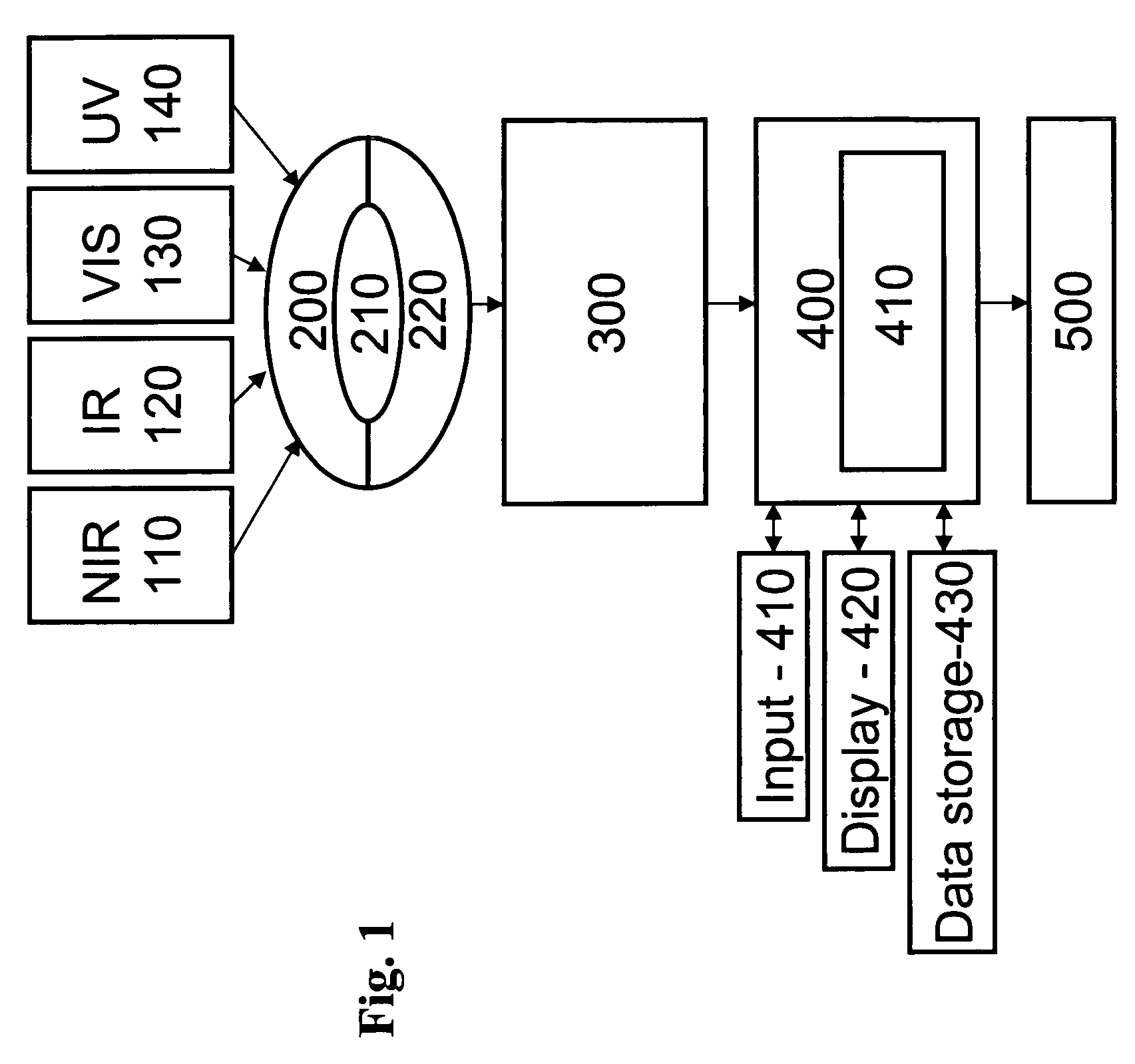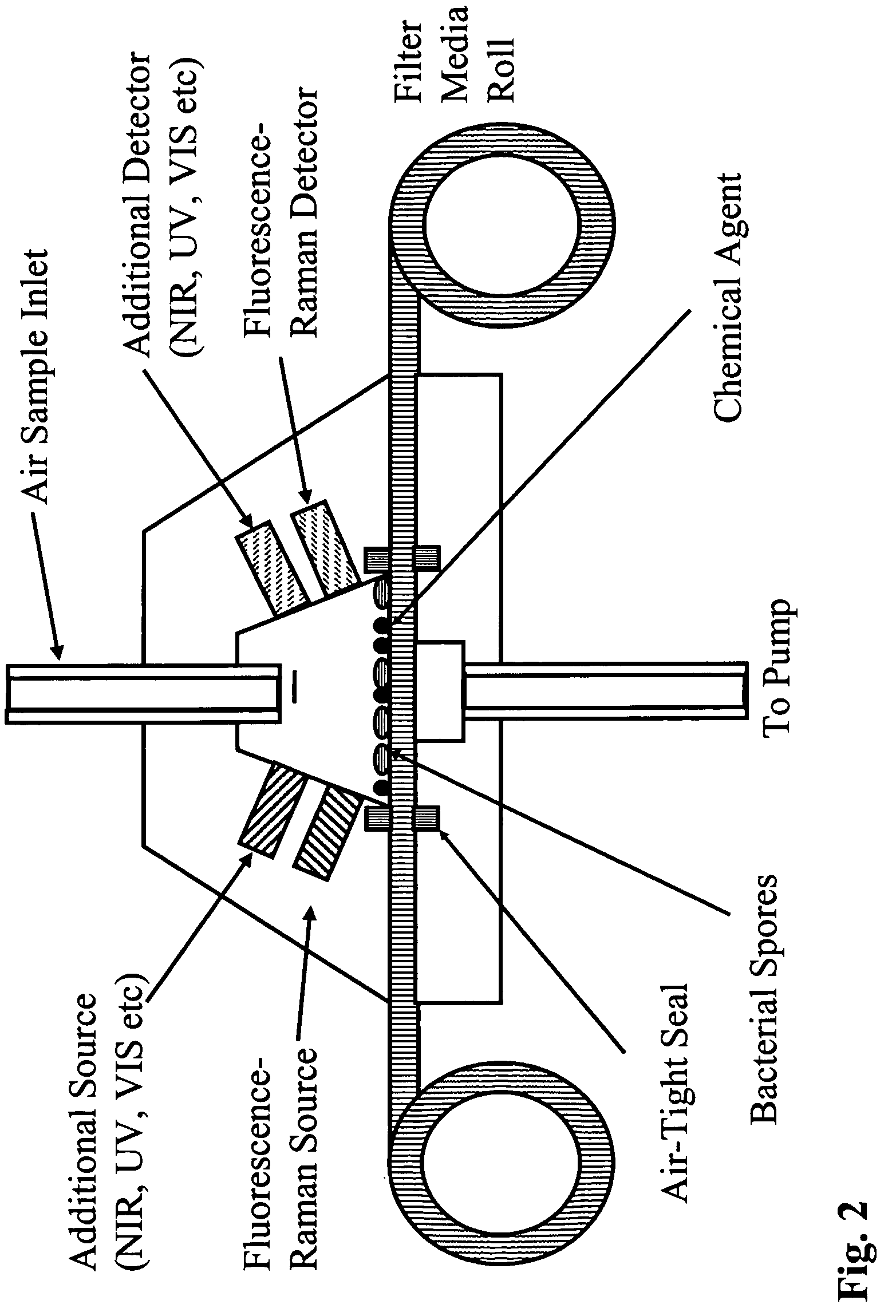Multipoint method for identifying hazardous agents
a hazardous agent and multi-point technology, applied in the field of multi-point method for identifying hazardous agents, can solve the problems of radiological materials, inadvertent deployment of harmful or weaponized chemical or biological agents, significant threats to public welfare, etc., and achieve the effect of speeding up the analysis of samples
- Summary
- Abstract
- Description
- Claims
- Application Information
AI Technical Summary
Benefits of technology
Problems solved by technology
Method used
Image
Examples
examples
[0065]The invention is now described with reference to the following Examples. These Examples are provided for the purpose of illustration only, and the invention is not limited to these Examples, but rather encompasses all variations which are evident as a result of the teaching provided herein.
[0066]Rapid Hazardous Agent Detection System
[0067]The overall schematic of a hazardous agent detection system that uses multipoint detection is shown in FIG. 1. Such systems can be used or modified as described herein to meet the instrument requirements of the methods described herein for multipoint hazardous agent detection systems. These configurations include platforms based on a telescope, a microscope, a macroscope, an endoscope, a fiber array spectral translator (FAST), or an air- or water-sampler design. Each of these is outlined in the following sections.
[0068]In FIG. 1, excitation sources 110, 120, 130, and 140 (corresponding to near infrared, infrared, visible, and ultraviolet sour...
PUM
 Login to View More
Login to View More Abstract
Description
Claims
Application Information
 Login to View More
Login to View More - R&D
- Intellectual Property
- Life Sciences
- Materials
- Tech Scout
- Unparalleled Data Quality
- Higher Quality Content
- 60% Fewer Hallucinations
Browse by: Latest US Patents, China's latest patents, Technical Efficacy Thesaurus, Application Domain, Technology Topic, Popular Technical Reports.
© 2025 PatSnap. All rights reserved.Legal|Privacy policy|Modern Slavery Act Transparency Statement|Sitemap|About US| Contact US: help@patsnap.com



